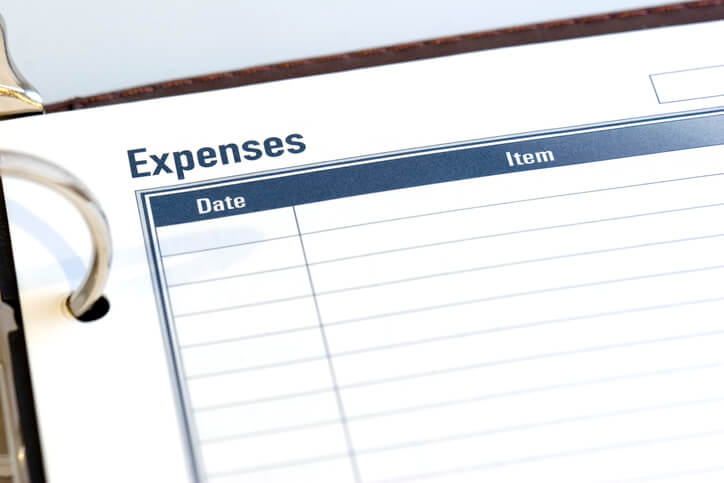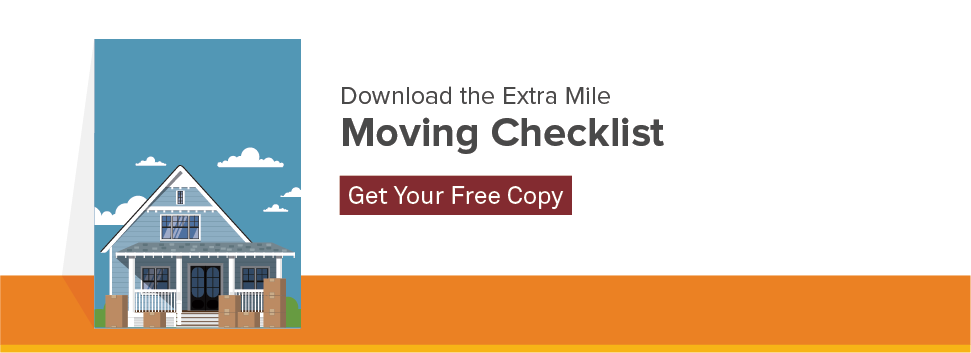Most people feel a little overwhelmed at the very thought of moving to a new home. Between packing, figuring out logistics, buying and selling, hiring and tipping movers, and decluttering your possessions, there’s a lot to do. And that’s before you even get to one of the most important moving-related questions: how much are you going to pay in moving costs?
Average Moving Costs

The average moving costs can range anywhere from $200 to $10,000. Why the massive range? The price of moving depends on a number of factors.
- How far are you moving? The farther you move, the more expensive the move tends to be.
- When are you moving? Summer pricing tends to be higher than other times of the year.
- How much will you be moving? Is it a studio apartment or a 5 bedroom house? Larger moves are more expensive.
- Will you be DIYing or hiring professional movers? On overage, hiring professionals can tack on anywhere from a few hundred to a few thousand dollars to your moving budget.
These are just a few of the many expenses that will influence the average moving costs for you.
A quick online search will turn up a range of average prices based on average homes and average distances. But, perhaps frustratingly, the real answer is: it depends.
If you’re feeling even more overwhelmed now, don’t worry. We created this guide to take the guesswork out of making a moving budget. Discover the unique factors you’ll need to consider when budgeting for a move. Then we’ll help you figure out exactly how much you’ll need to save for your move.
How Much Does it Cost to Move?
So how much does it cost to move? The first set of expenses to consider are the more obvious (and less obvious) costs of moving itself: transporting you and your things to your new location. Not every one of these costs will apply to you, of course, and you may have different additional expenses due to your situation. So picture your personal move, not a generic move, as you add up these budget items.
Storage
Many people rent a storage unit when they move. When calculating the costs of a storage unit, remember to consider the two factors.
- The cost of renting the unit itself. Different sizes and types of storage units will have different monthly rates.
- The cost of moving items in and out of the storage unit. If you’ll be hiring local movers to transport household items both into the storage unit and later into your home, you’ll need to plan for that cost twice.
Hiring a Moving Company
There are multiple levels of moving services that you can pay for.
- Full-service movers: They will pack and unpack your home and transport your possessions on their truck.
- Fully DIY move: You pack, move, and unpack your entire home yourself.
- Hired transportation: You pack a rented pod that is then transported by professionals.
- Hired packing services: A hired crew will load and unload your boxes, but you’ll drive the moving truck yourself.
All of these options come with different prices, and even within those categories, the final price can vary widely depending on your location and circumstances. Remember to factor in the cost of tipping your movers as well. Each person on the crew should get a tip, even if different people load and unload your stuff.
Transportation Costs
Whether you’re driving your own car, a truck rental, flying, or using any other means of transportation, there will be costs associated with the trip. If you’re driving, try to figure out the price of fuel, tolls, parking, food, and lodging. If you’re flying, consider the cost of plane tickets, food, and rental cars if needed.
Moving Supplies
Packing materials like moving boxes, tape, bubble wrap, etc. will cost money. If you’re budget savvy, you can find moving boxes for free or at a discount. But specialized materials, like mirror or wardrobe boxes, will likely need to be purchased new. If you’re using a moving company, be sure to check if these supplies will be included or if there’s an added cost.
Moving Costs for Pets
Although driving your pet across town in a local move is free, additional moving costs should be factored in for long-distance moves.
- Airline fees to fly a pet on an airplane
- Paying for pet-friendly hotels
- Vet bills and fees to ensure your pet’s vaccines and paperwork are up-to-date
- Cost of any new supplies for moving your pet like extra food, a new carrier, etc.
The Unexpected
Your car gets a flat. Your flight is delayed, necessitating a hotel stay. Your movers take longer than planned. The storage unit you chose is too small, so you have to rent a bigger one. Your cellphone breaks en route and you have to stop and have it repaired.
It’s impossible to list all these unpleasant possibilities, because, well, they’re unexpected. (And they can be very minor, like needing to buy some allergy medication or scissors.) But while they probably won’t happen, they might, so make sure you have some extra money saved up just in case.
Extra Moving Costs for Relocating Out of State

An out-of-state move can mean a more expensive move, for two reasons.
- The paperwork required to make your new residence official – like vehicle registration.
- Out-of-state moves often involve greater distances. More distance means higher moving costs, both for DIY and full-service moving.
When you’re moving from one state to another, take the time to research specific moving costs involved. Ask your moving company what impact, if any, crossing state lines will have on the cost of your move.
If you’re driving yourself, plan out your route to determine how long it will take and how the distance or particular route will (or will not) cost you extra money. If you’re coming from a state without tolls to a region where they’re common, you might be shocked at how much cash you need to have on hand for the drive. If you’re moving to or from Alaska, you’ll have to pass through Canada along the way. If you’re moving to or from Hawaii, you’ll need to ship your vehicle and household goods.
Hidden Expenses After the Move

Once the physical move is over, you’ll have to plan for a different category of moving-related expenses.
- Research housing costs where you’re moving as compared to your old location. Don’t assume that renting or buying a house or apartment in your new town will cost the same as it does where you are now.
- If you’re renting a house, remember that you will probably have to pay a deposit along with your first month’s rent. (In some cases, you’ll have to pay your last month’s rent upfront as well.)
- If you’re buying a home, make a home inspection checklist to determine what repairs need to be made, both short- and long-term. Anything involving wiring or structural issues will probably have to be done right away; landscaping can probably wait much longer.
- Add up the cost of utilities like electricity, gas, oil, and water. Research local options for phone, cable, and internet service, as these can vary greatly between different states and cities.
- Moving can impact your insurance. If you’re moving to another state and you own a vehicle, you’ll probably have to obtain a new driver’s license and vehicle registration. Find out how soon after your move this needs to get done. Also, research other vehicle-related expenses like inspections.
- Insurance rates for your home and car can vary based on where you live, even for different addresses within the same area. When looking into insurance, also determine whether specific types of insurance, e.g. flood insurance, are recommended or required in your new location.
- Unless you packed up every last thing in your old kitchen, remember that you’ll have an initial high grocery bill when you restock on pantry staples and basic necessities.
- You may also choose to buy new furniture and home décor items for your new home. Some of these will be more urgent needs than others. You’ll also probably have to buy all new cleaning supplies, and possibly equipment like shovels, lawnmowers, etc.
- Unless you brought your shampoo, cotton balls, and other toiletries and personal items with you, you’ll probably have to hit the drugstore for a large and possibly costly purchase of necessities to start you off in your new place.
A moving tip to help you budget for these expenses is to write a list of whichever of the above apply to you (and add anything else you think of) and figure out the cost for each one. Then consider which are necessities (e.g., heating your home) and which can be postponed (e.g., most new furniture.)
Ways to Reduce Moving Costs

While moving can be very expensive, it doesn’t always have to be. There are ways to reduce moving costs.
- Moving can be a perfect time to declutter your home and whittle down your belongings. But don’t just dump or give away old items. Instead, have a garage sale. You might be surprised how many people are willing to pay for your cast-offs. And even if you keep prices low, these sales can quickly add up.
- Find free or low-cost boxes and other moving supplies. There are lots of affordable sources for boxes and other supplies if you have time to seek them out.
- Take advantage of any discounts you may have access to through memberships or affiliations. For example, if you’re driving cross-country, your AARP membership can reduce the cost of hotel stays.
- Is your schedule flexible? You can save money by moving during off-peak times. Fewer people move in winter, in the middle of the month, and on weekdays, meaning these time slots generally cost less.
- If your friends and family are willing, ask them to help you with packing, cleaning, or other tasks that you would otherwise have to pay professionals to do.
- If you’re moving out of a rental and you put down a deposit, make sure you get it back. This can be easy to forget about in the hectic stages of moving, but take the time to do what your landlord requires and follow up with them if necessary.
Though unexpected costs may pop up along the way, moving expenses don’t have to be a total surprise. With some planning and forethought, you can ensure your move will go smoothly, both for you and your wallet.








I love reading through and I believe this website got some genuinely utilitarian stuff on it! .
Be sure to check on the items that may be tax deductible. For example if you are moving for a new job.
Great advice David, thank you!
That covered up most of the fees and services needed for moving. We moved ones and it was expensive back then.